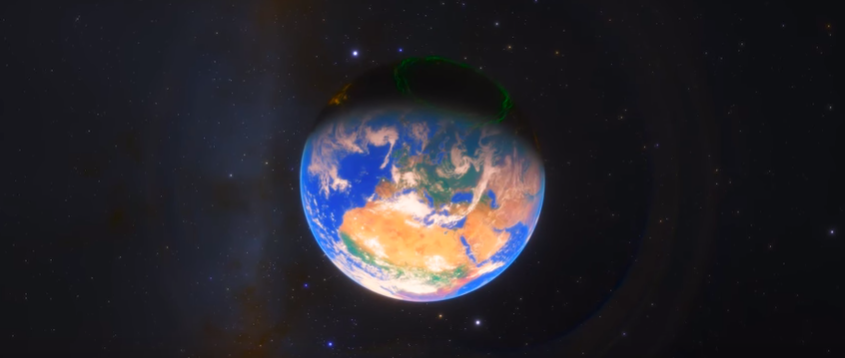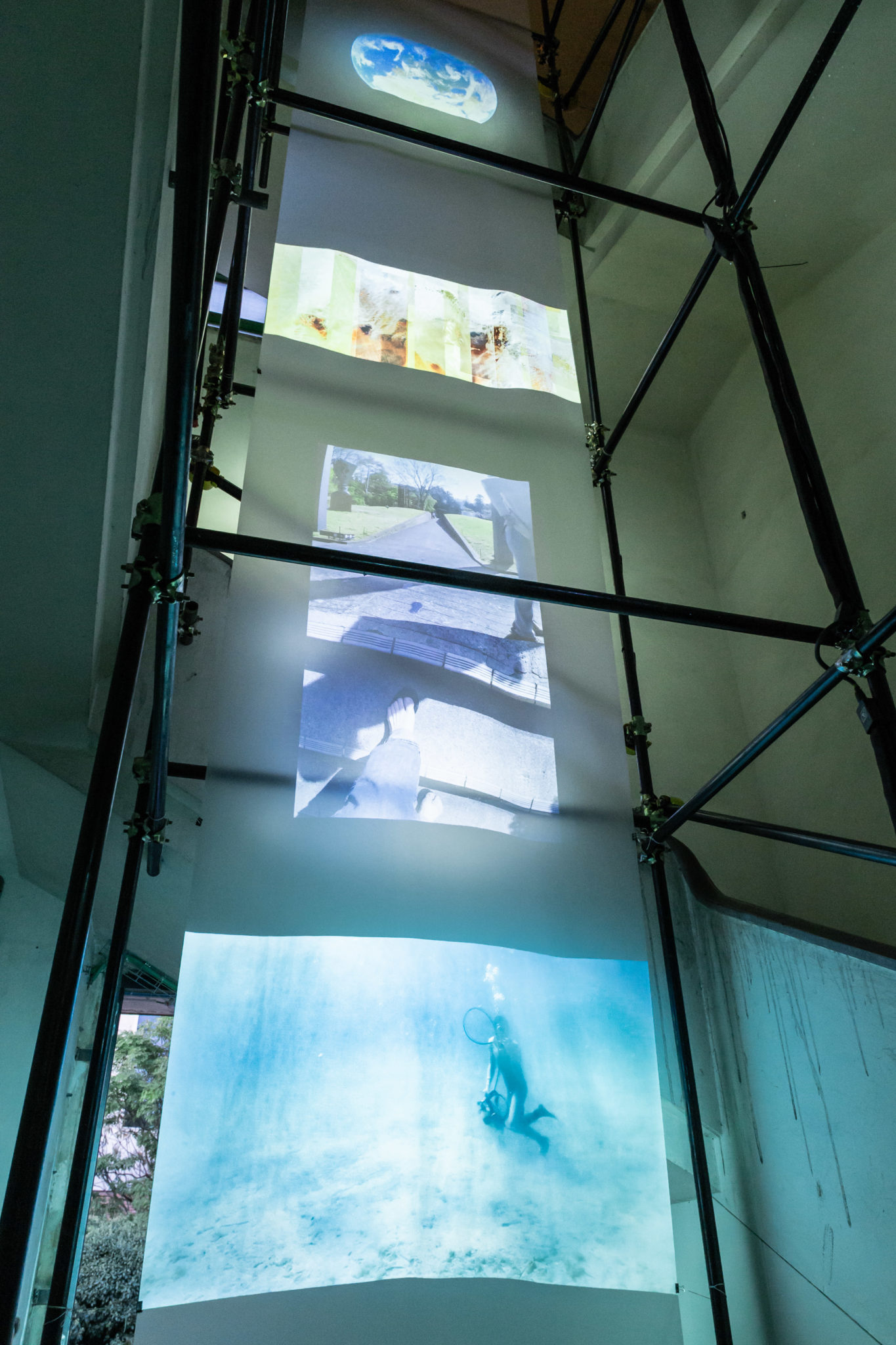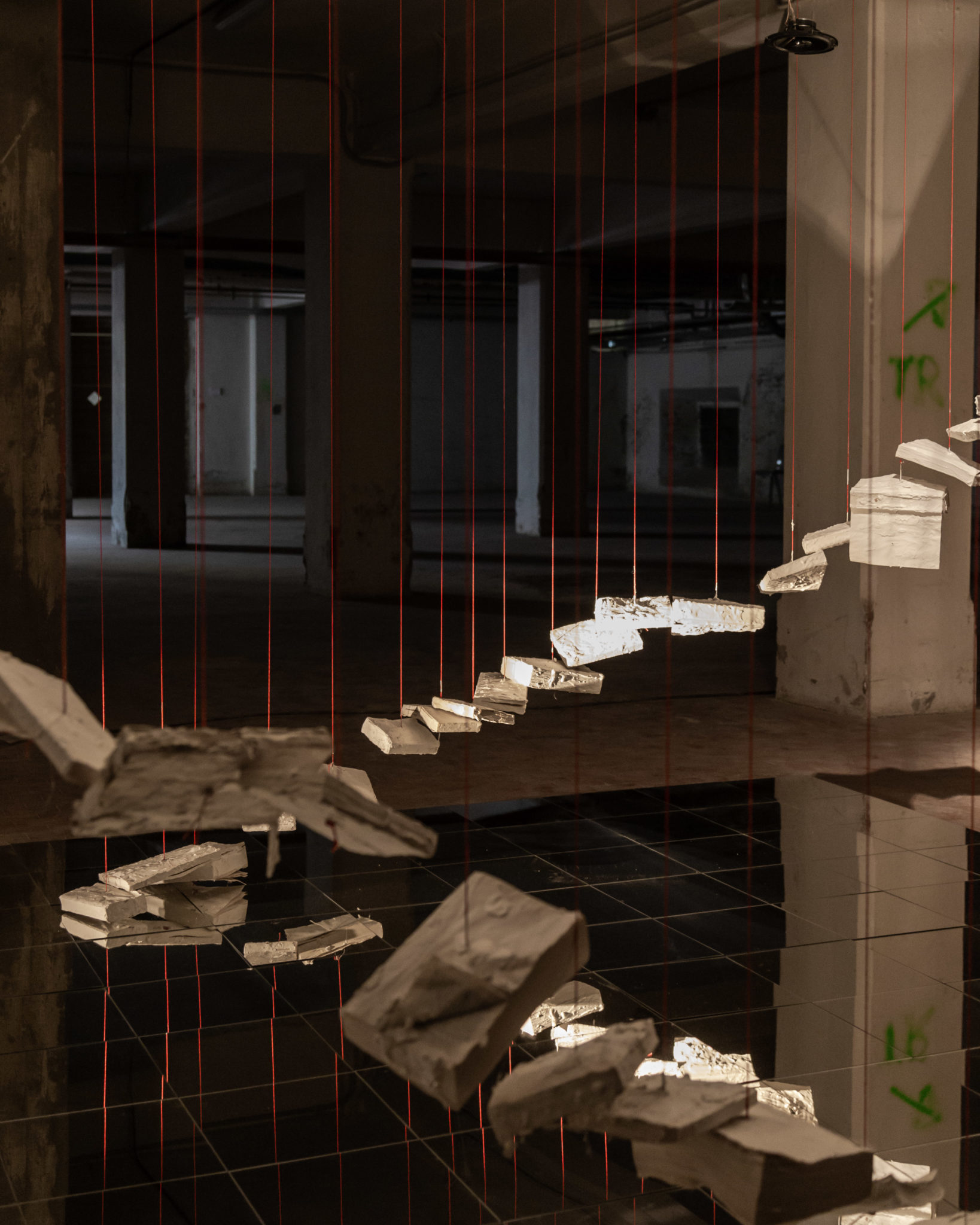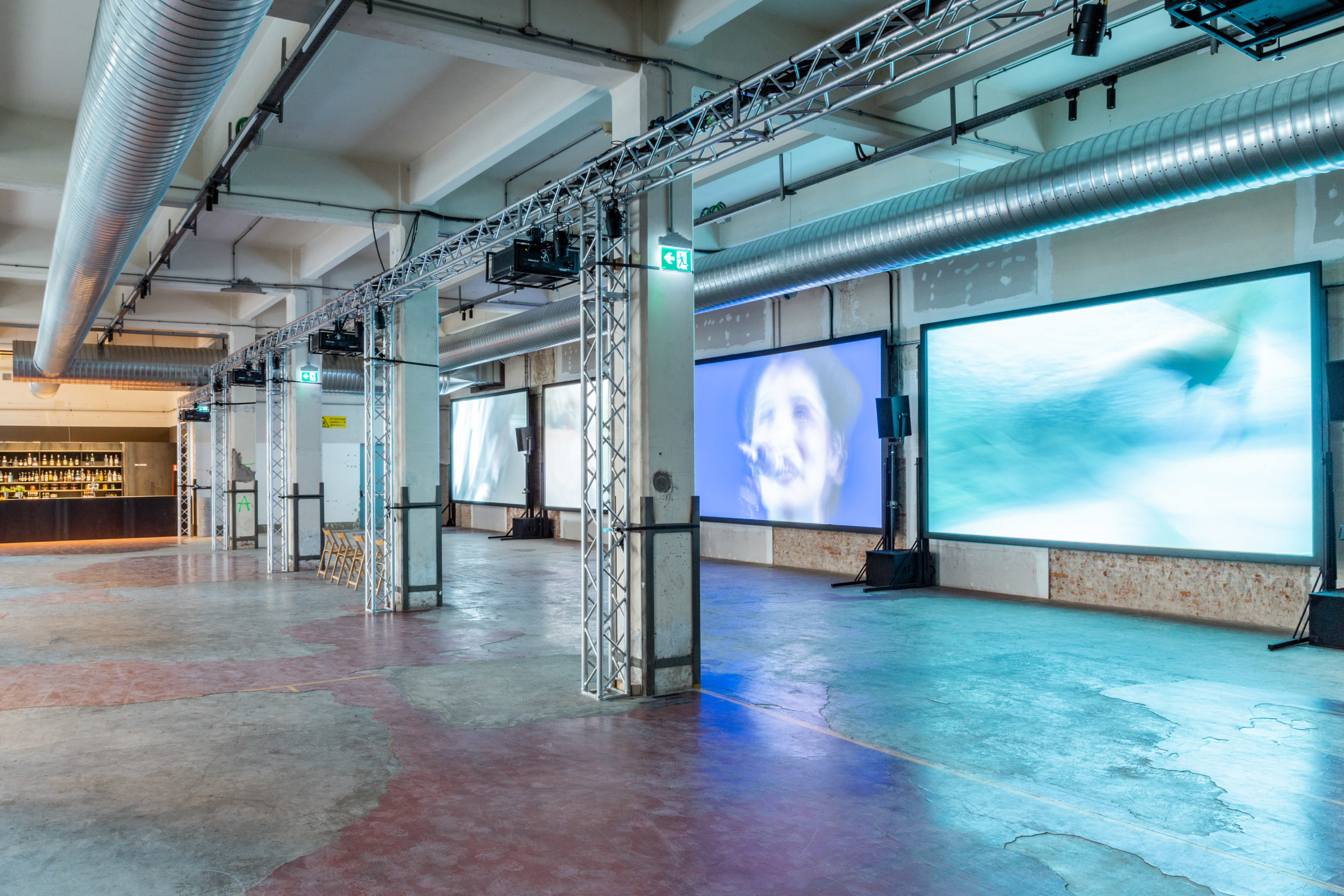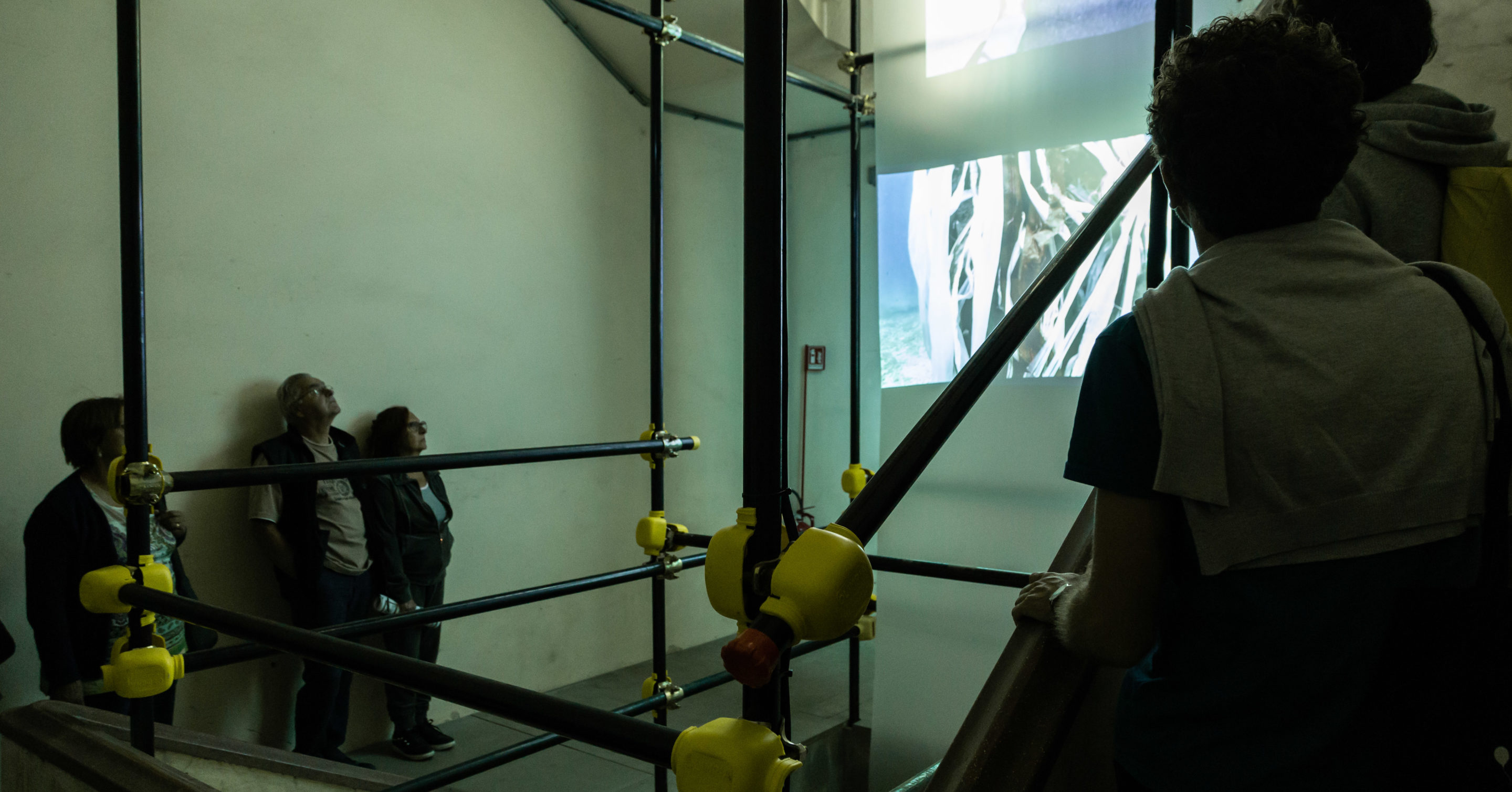Art On Earth
Art On Earth
From 7-14 September, the God is Green festival presents Art on Earth, an exhibition that is conceptually and physically located in three different moments: Human, Earth Starway.
Breaking down human perceptions of life and nature to rediscover a harmony that was lost over time. Too ambitious? Appropriate. And it is here where art comes into play.
Three different locations, one itinerary. Art On Earth is a journey through the ex-industrial space of Manifattura Tabacchi, which accompanies the visitor through their certainties, offering them points of reflection on their own role in the world that surrounds them and their responsibilities.
It begins in the basement of the B8 building with the first stop, Human. Mankind already has the power to modify the environment that surrounds it, in this panorama, culture, the thing that distinguishes us from other living beings, becomes a place where we can re-find the power to manage it.
In spite of all this, human beings are still just guests on this planet. And here we have Earth: moving images of earthquakes become a reminder, whilst the earth trembles underneath these cement symbols of presumed human omnipotence. The last stage is an ascent through the hallway of the stairs of B9, Starway, with an immersive and experiential installation that recalls the Elizabethan Globe Theatre. The installation reunites the vertical and horizontal dimensions of mankind in a sequence of videos, passing from the depths of the sea, through the surface of the earth, first immediately perceptible, then in its digital decomposition, up to an infinitely distant vision of the planet. This is the key passage: the perception of mankind with respect to its presence in the world is re-dimensioned, whilst the view expands, it distances itself from the present. In this process we return to the origins, and the human cycle of life and mortality returns in harmony with the inexorable linearity of nature. An assumption that mankind seems to have put into crisis.
HUMAN
DNA Has No Color
Nancy Burson
2019
glass
The installation is the translation of a scientific discovery into glass, through which human DNA, appearing translucent under the microscope, takes on colour. The artist’s work uses science to negate the concept of race and, above all, its most dangerous derivative, racism. Created thanks to a collaboration with the Fondazione Berugo and exhibited in a world premiere at Manifattura Tabacchi, the work tackles current and lively social themes, in the minds of all who view it.
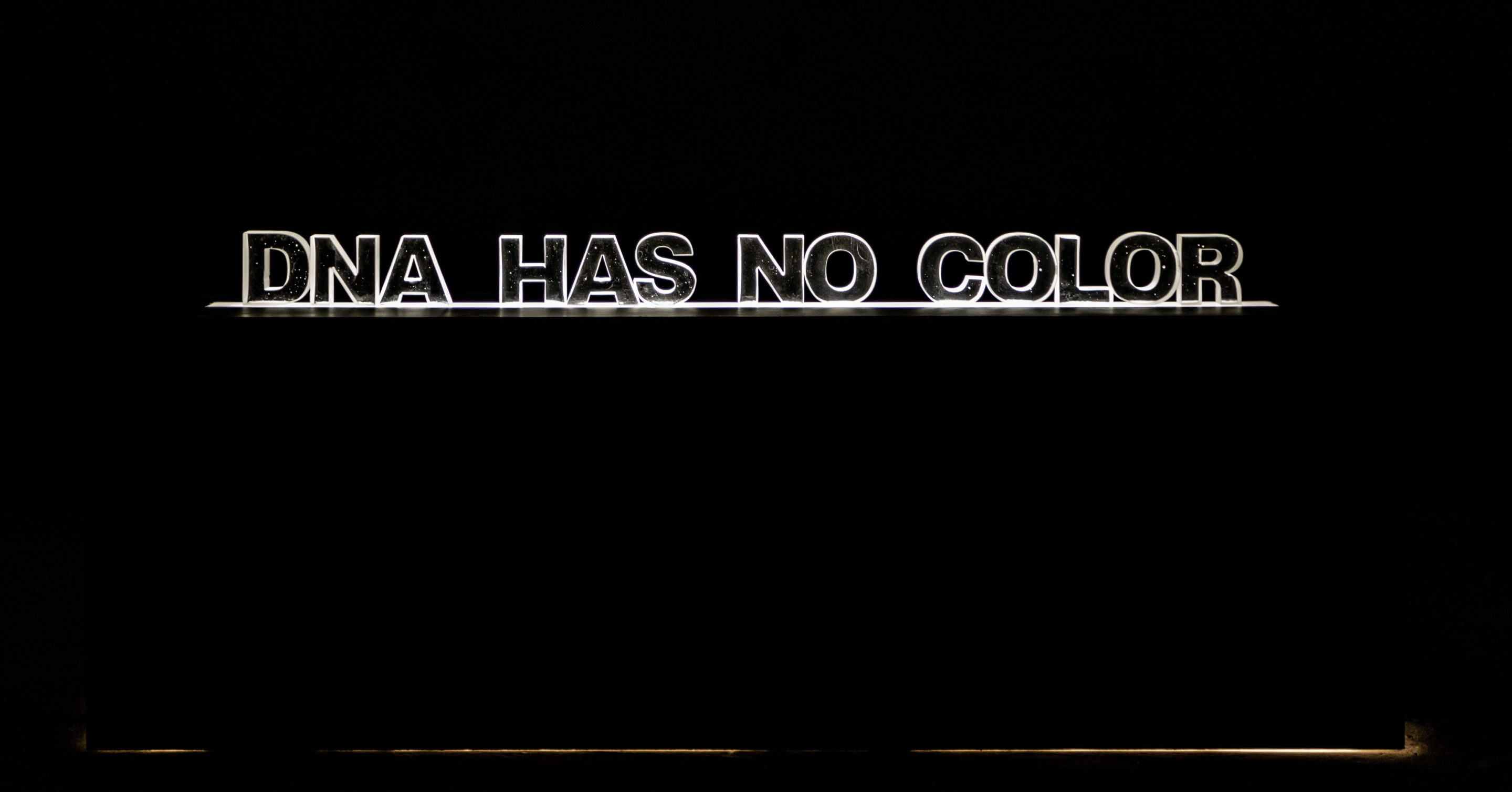
A world-renowned artist and photographer, this is not the first time that Nancy Burson has grappled with this topic. The artist is actually the inventor of the Human Race Machine, a technique using facial recognition which shows how people would appear as another race. Originally commissioned by Zaha Hadid for the Millennium Dome in London in 2000, the machine has also been used by the FBI in long-standing missing person cases. It has also been accompanied by the phrase “There’s no gene for race”. DNA has no color represents the closing of the circle for this scientific message, authoritatively showing the illegitimacy of racism.
Culture Should Be Our DNA
andrea cavallari
2019
visual and sound installation
books, kaolin, ropes, elettronics
The work relates to two codes, different in nature but closely linked to each other: one genetic and one cultural. Putting them on the same ontological plain, the artist presents a provocation, which paradoxically views culture as containing all the genetic information needed to define and make a social structure work. It verges on being a political proposition, which assigns culture a prevalent role for the conservation and the reiteration of the human race.
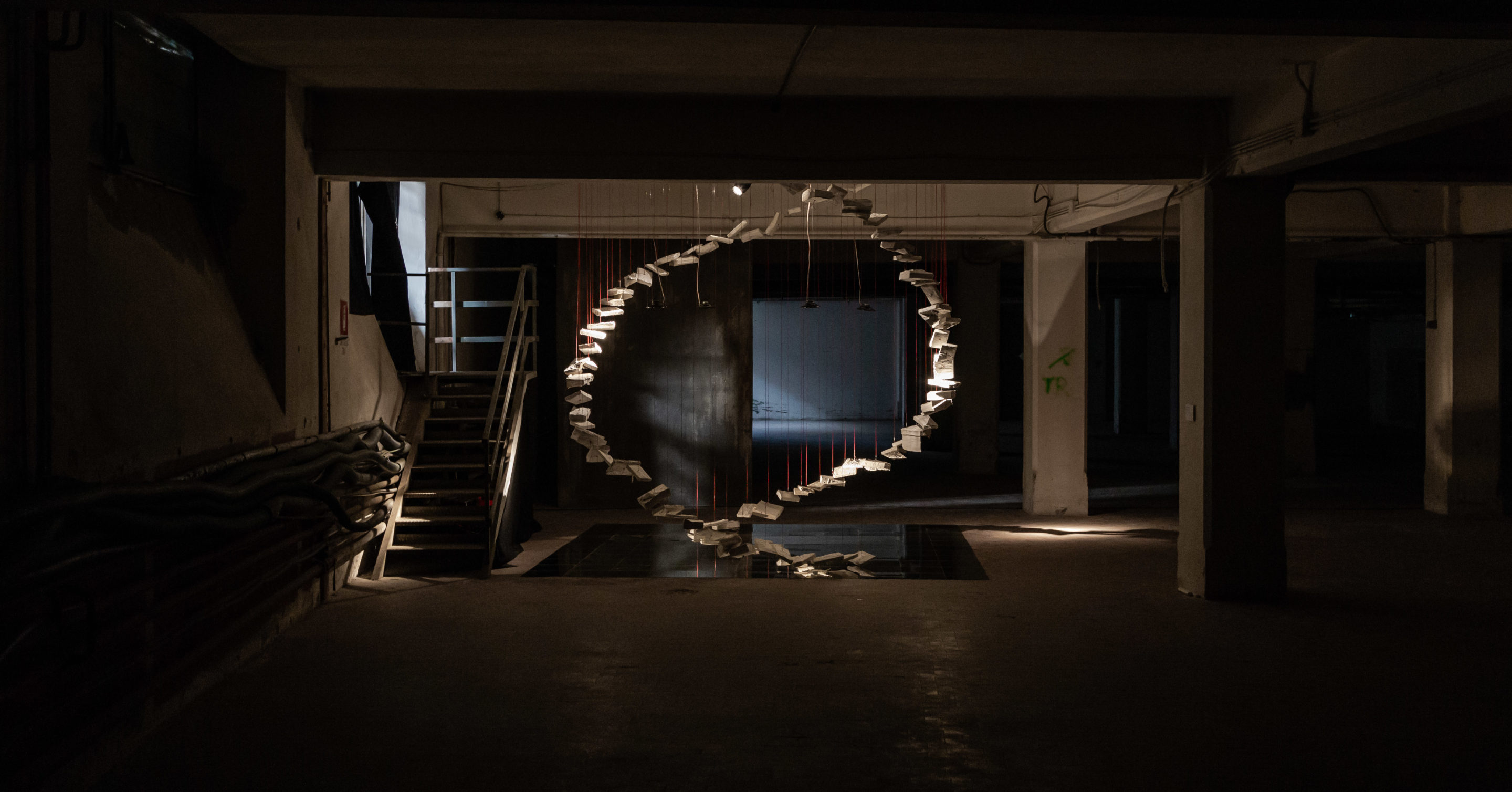
The most recent works of Andrea Cavallari explore the profound nature of sound, whilst his compositions often reflect on and take inspiration from the visual world, translating images into sounds. His practice can be considered as an expression of exceeding the technical and expressive limits of an artist, which are contaminated at will and with full factual knowledge in installations which, in their diversity, find a common thread through this complexity.
EARTH
Nyman's Earthquakes
Michael Nyman
2019
video installation
In this video installation comprised of five screens, the artist explores his relationships with a series of earthquakes in which he was in some way involved. Skopje (1967), Mexico City (1985), Armenia (1968), and Kobe (1995), are just some of the tragic events with which Nyman found himself interacting, either indirectly as a documentary composer or as a friend of the victims, or directly in recovery efforts. The room creeps into the rubble, with its desperate looks and general confusion, while the melody, with tones the flit between classical and electronica, accompanies the silent observation of the power of nature.
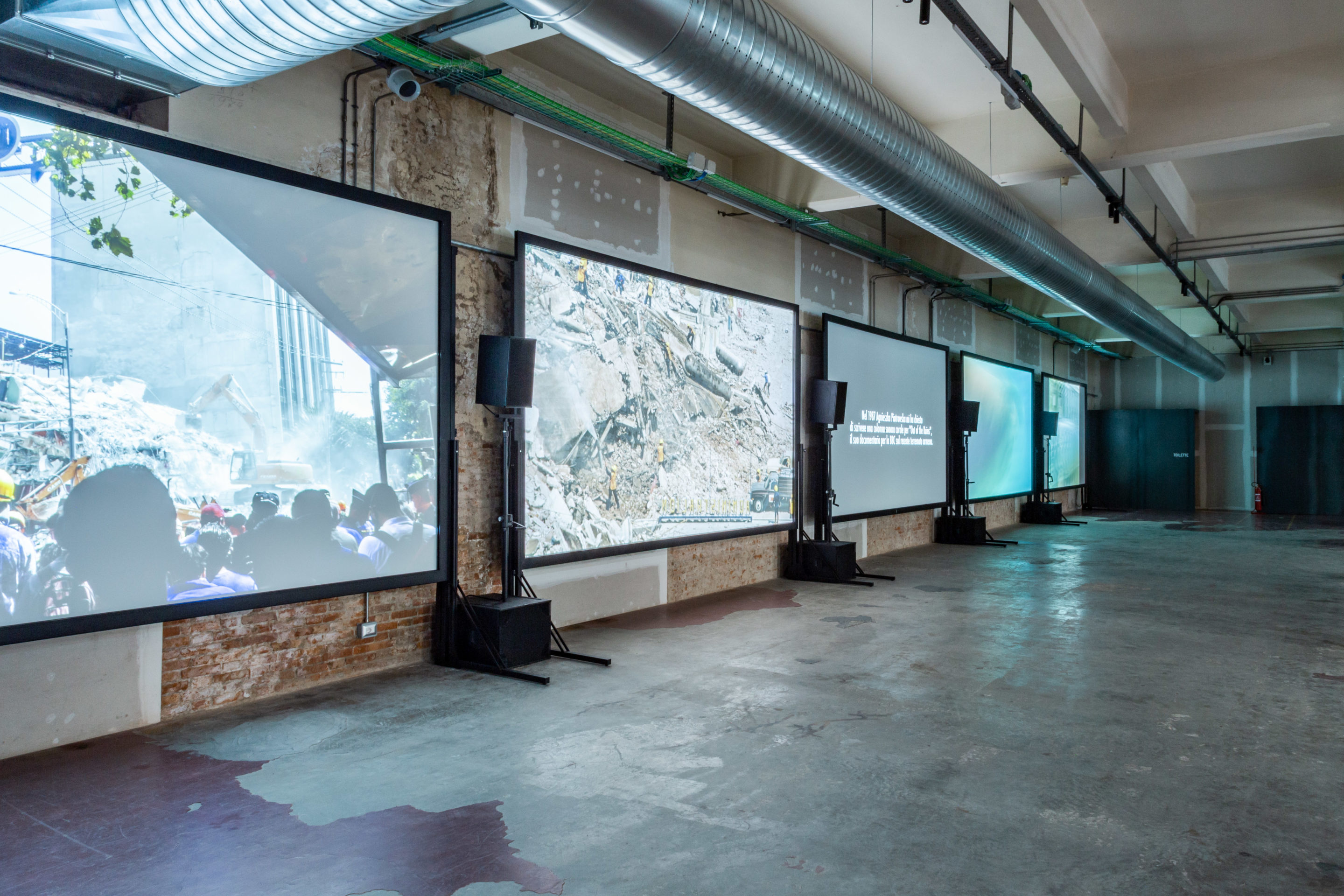
One of the UK’s most innovative and celebrated composers, Michael Nyman opened with WAR WORK: 8 SONGS WITH FILM (2014 – 2018), a film that includes Nyman’s Earthquakes. The installation, presented in its world premiere at the Manifattura Tabacchi, will be projected on a single screen for the Milan Film Festival and will open events commemorating the L’Aquila earthquake.
STARWAY
Colonizing the ocean is not an easy task
giovanni vetere
2019
video installation
Filmed on the island of Poros in Greece and in collaboration with Forlane Studio 6, the project explores the possibility of humans living in the depths of the seas. It features an underwater performance, in which mankind interacts with a possible habitat solution, questioning characteristics and structures. Distancing himself from the Western idea of humans living on Mars, which to this day is still somewhat far-fetched, the artist embraces a vision of reuniting human beings with nature, proposing a role in which we have a greater responsibility for the world we belong to.
complete video
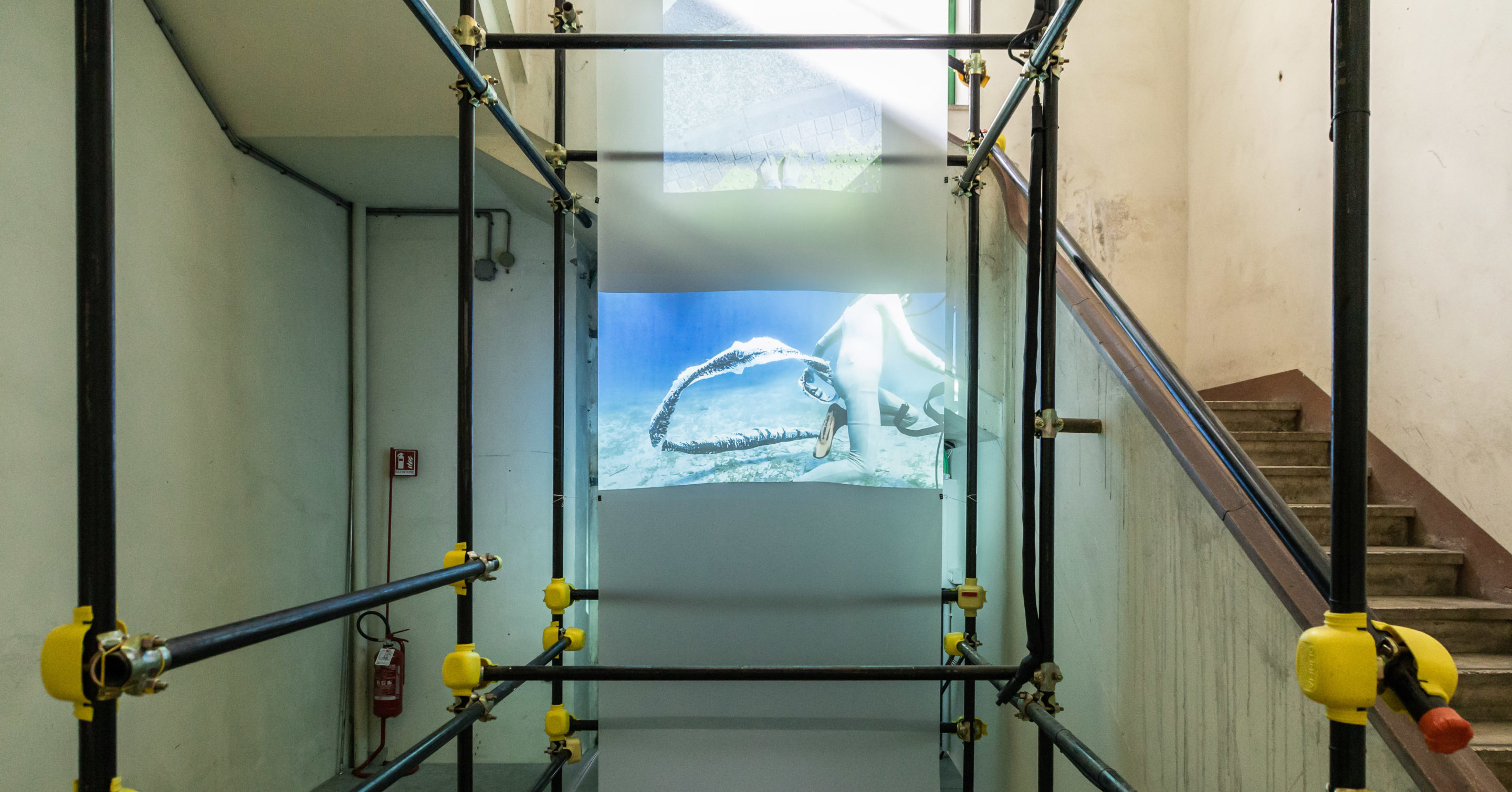
Artist and performer Giovanni Vetere focuses his research on the interaction between water and the human body, trying to understand the effects that water has on it, not only as a physical response, but also as a way of generating meaning and symbolism. The sea symbolises water, water that is present in the maternal uterus, in the placenta of all existing creatures, and therefore the origin of life on earth.
Tokyo Aruku
Andrea Cavallari
2016
video
This video that was shot in Japan between April and November 2017 is made up of two sections: one up high, which represents sight, and one lower, which shows bare feet enjoying a potentially endless walk. With this work the artist shines a critical light on the acoustic pollution of the city in comparison to the sounds present in nature, as well as the meaning of the intellectual testament left by Borges.
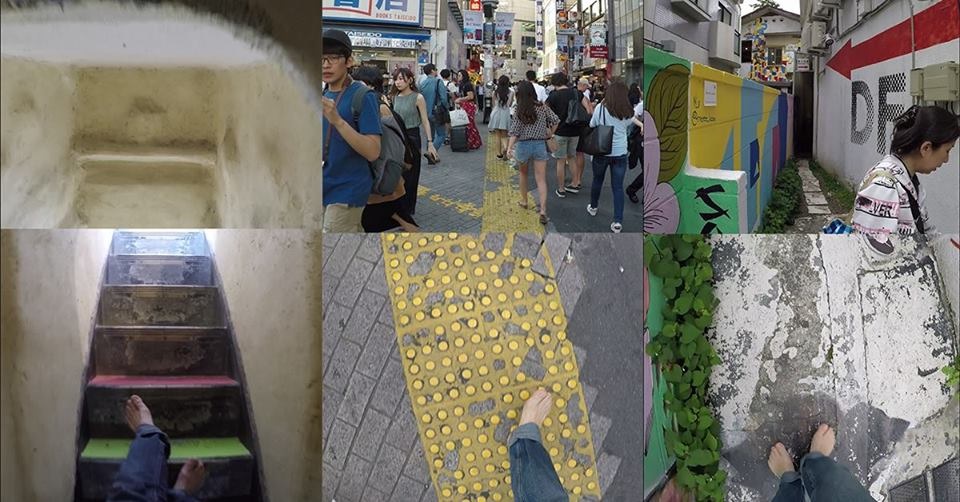
Tokyo Aruku is part of a larger project called Si pudiera volver a vivir… [if I could live again…], a non-stop 24 hour video shot in five continents and shown in real time. The work reflects on a quote by Jorges Louis Borges who, at the end of his life wrote: Si pudiera volver a vivir comenzaría a andar descalzo a principios de la primavera y seguiría descalzo hasta concluir el otoño [if I could live again, I would walk barefoot from the beginning of April until the end of autumn].
Weltanschauung - The world as a will for representation
Matteo Pasin
2016
Video
The video – the first chapter in a trilogy – recomposes Google Earth satellite images, which they have been accumulating over time since 2001, representing the surface of the Earth through vision of the world that overlaps with reality, erasing the borders and distances and redesigning the topography. Through computer networks, a digital landscape of synchronised images opens up, which in turn returns to an abstract perspective that distances itself symptomatically from its origin.
complete video
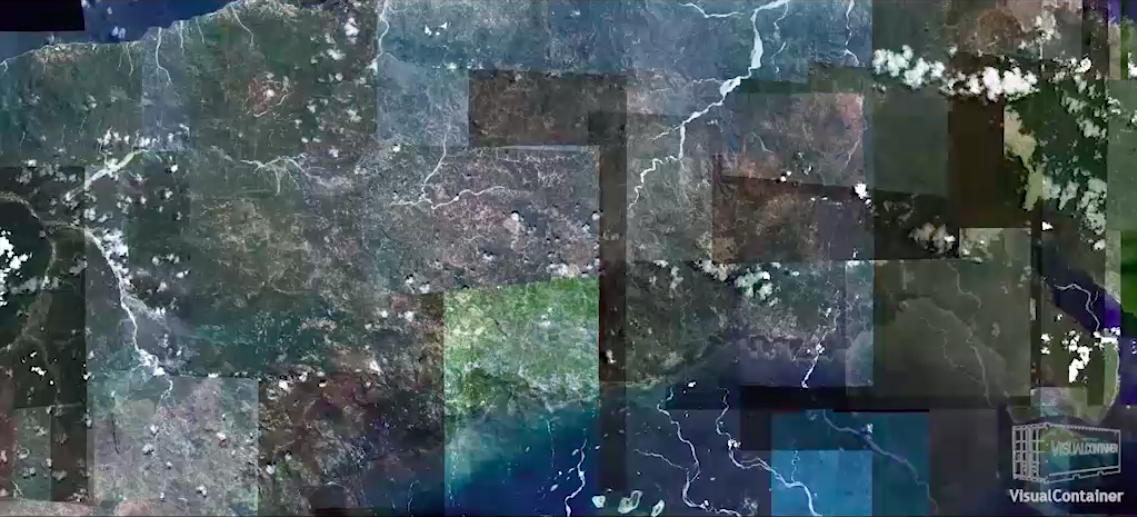
A photographer and video artist, Matteo Pasin’s artistic research profoundly reflects on the use of technology and how it has changed our perceptions of reality. Weltanschauung is a project divided into three parts which borrows visual material from Google Earth which is then gradually developed through digital techniques and distortions to highlight the importance of technology in the modern representation of images and reality. Pasin’s vision provokes a reflection on the nature of the boundaries imposed by humans and those that are redeveloped through virtual images.
Zoom Out from Garching to the universe
European Southern Observatory
2018
video
A ‘Zoom Out’ which starts from the European Southern Observatory (ESO), at Garching in Germany, and, as we get further and further away, turns the Earth into nothing but a small sphere which then disappears into the Milky Way. We arrive at the edges of the known universe, where even the galaxies are just little points of light. It’s a vision which alienates us from anthropocentrism, a reflection of the real dimensions of our knowledge.
complete video
